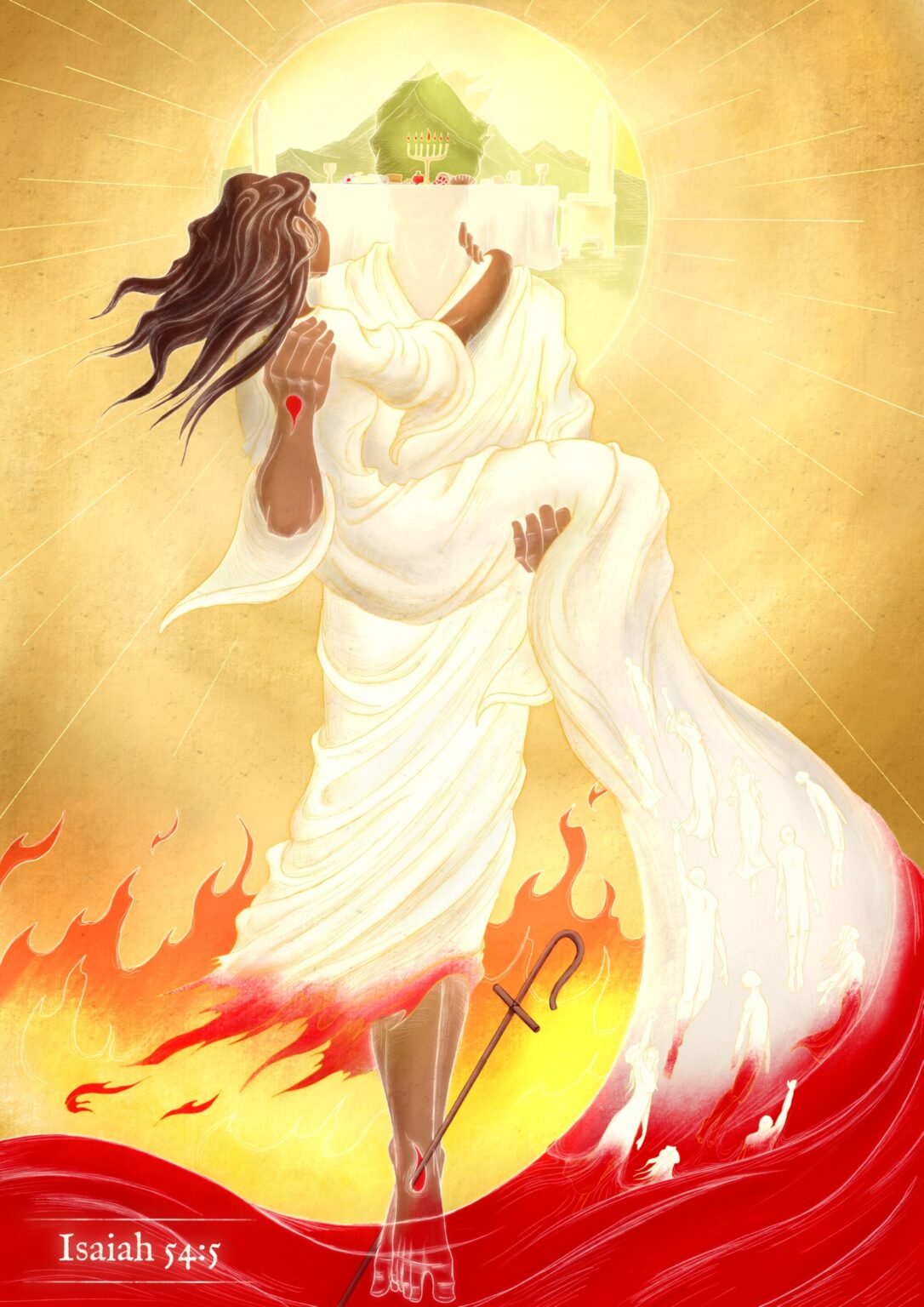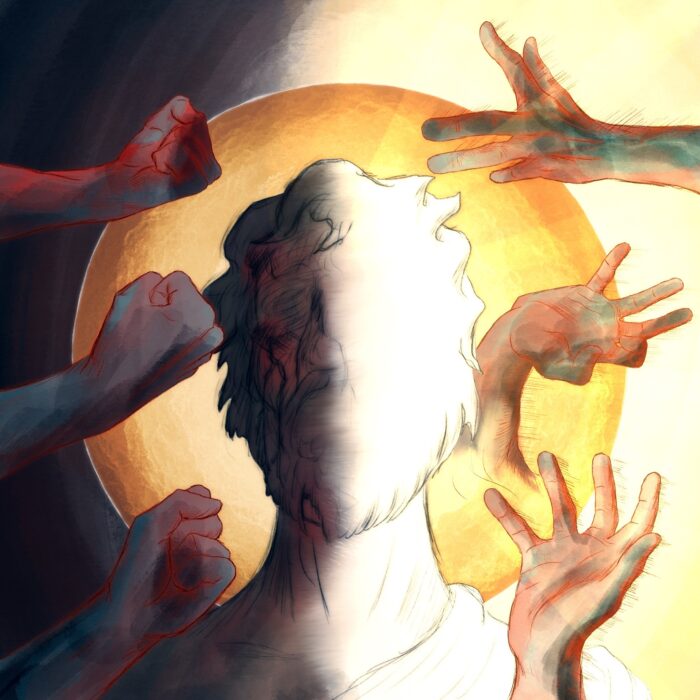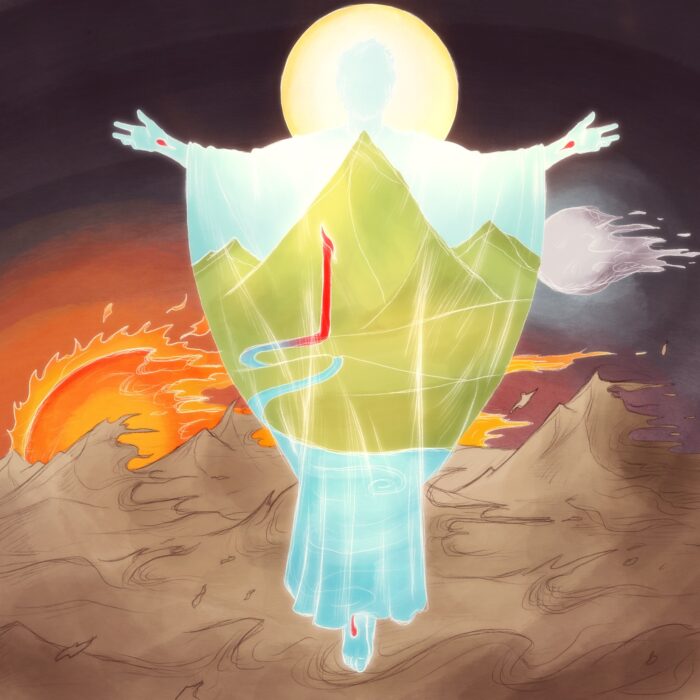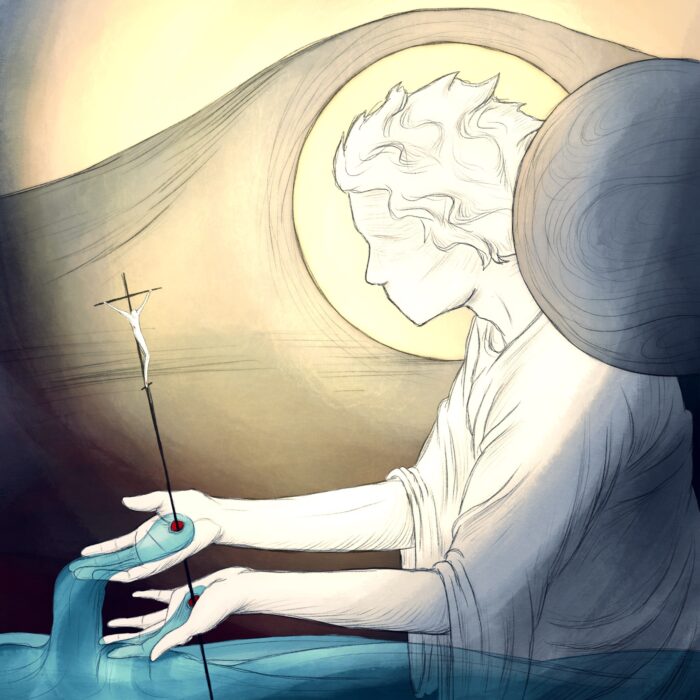
“For your Maker is your husband,
YHWH of hosts is His name;
and the Holy One of Israel is your Redeemer,
the God of the whole earth He is called.”Isaiah 54:5
The Passage Explained
The “for” that begins this text tells us that verse 5 functions as a ground for the eschatological hope laid out in verse 4. In other words, God’s people need not fear final disgrace because He Himself is their Husband who creates, defends, redeems, and rules them for their good and the making known of His Name. In this brief overview I want to focus especially on the concept of YHWH as the husband of His people.
God as husband and His people as bride is a theme that flows throughout the canon of scripture and finds its supreme manifestation in the incarnate Son who pours out His life on the cross to purchase a people for Himself from all times and places (Ephesians 5:25ff, Revelation 5:9ff). In fact, Paul goes so far as to explain that the very institution of marriage (and, we could say further, the creation of humanity as a binary species, comprised of complementary pairs of male and female) exists in order to communicate the truth of God for His people, of Christ for the Church (Ephesians 5:31-32). It is not saying too much to say that God created the universe in order to bring a people other than Himself into covenant community with Himself….that is, God created the universe to make a bride for His Son.
Now, here in Isaiah 54, YHWH’s marriage-imaging covenant commitment to His people is the basis for their final hope. They will not be ashamed or finally cast off because He is their husband; that is to say, because He has committed Himself to them by blood (ultimately His own). But there are two questions we need to ask to understand both this passage and the picture I’ve created to illustrate it: First, how can the “Holy One of Israel” be the husband of a sinful people who are prone to the adultery of idolatry? And secondly, what is the great hope the bride?
First, how can the Holy God be husband to an unholy people?
Well, of course, the entire narrative of scripture answers that question, but in the immediate context of Isaiah 54, I think we get our answer by looking one chapter back to the song of the Suffering Servant in chapter 53. There we see one who will bear the sins of his wayward flock in his own body, and who will be crushed to death under the punishment that his people deserve (53:4-6). And yet this crushing will not be ineffectual, rather its end will be resurrected life for the Servant who was slain, and righteousness counted to those for whom he died (v.10-11).
And who is this servant? The full unfolding of revelation teaches us that it is Jesus Christ—YHWH Himself in the flesh (Romans 4:25, 1 Peter 2:24-25). So, YHWH can be husband to a sinful people because He Himself will bear their sins in His own body and be crushed under their punishment. At a tree in Eden, the first husband blamed his bride and tried to heap his own punishment on her, but at the tree of Calvary, the True Husband bears His bride’s blame and swallows into Himself the eternal punishment that she deserves.
So, when we say that the eschatological hope of God’s people is grounded in His covenant commitment to them as their husband, another way of saying this is that their hope is grounded in the crucified and risen Jesus, whose death and resurrection both enable and prove Him to be the husband of His wayward bride….a bride whom He will wash with the water of His word and the blood of His atonement so that she might be pure and blameless before Him (Ephesians 5:25-27; Revelation 5:9, 7:14, 19:6-8).
Secondly, what is the great hope of the bride?
What is the gift of this covenant relationship? What does God give His people when He binds them to Himself as their Husband? Or, in other words, what is “eternal life”? We looked back to chapter 53 for our previous answer, and I believe we need to look forward to chapter 55 for this answer. There—especially in verses 1-3—we see that YHWH Himself is the great gift of His covenant love.
“Come, everyone who thirsts, come to the waters; and he who has no money, come, buy and eat!…Listen diligently to me, and eat what is good, and delight yourselves in rich food.” — Isaiah 55:1-2
As those who are secure in YHWH’s covenant commitment through the atoning work of the Suffering Servant, God’s people are called to come to Him as their true food and true drink. He Himself is the wedding banquet spread out before His people, He is the feast, He is the good food in which His people must delight themselves if their souls are to live (v.3). And just as we saw that chapter 53 referred to Christ, so too the feast of chapter 55 (who is God Himself) finds its fulfillment in the God-Man who gives His flesh and blood for the life of His people on the cross.
In John 6:54-55, we read some of the most jarring words in all of scripture:
“Whoever feeds on my flesh and drinks my blood has eternal life, and I will raise him up on the last day. For my flesh is true food, and my blood is true drink.”
The imagery is shocking, but the point is clear: the True Food and True Drink for which humanity longs—the good food of Isaiah 55, the feast which to receive is to have eternal life—is Christ Himself. But how does one receive a historical person as their food and drink? As the rest of John’s gospel helps us to understand, one feasts on Christ’s flesh and blood by receiving His resurrection-illuminated crucifixion as the saving revelation of the One True God. God’s people feast on Himself as their life when the “mouth” of faith receives the bread of Christ’s broken body and the wine of His atoning blood, and—in receiving—proclaims with Thomas, “this one is my Lord and my God!”
God Himself in Jesus Christ (whose crucifixion and resurrection has swallowed up death forever) is the feast of rich food and well aged wine prepared by YHWH on Mount Zion (Isaiah 25:6). He Himself—received by faith—is the feast of eternal life.
And so, God is the suffering servant who secures and preserves a bride for Himself, and God is the banquet—prepared on Calvary and spread out for eternity—to whom His people are saved, upon whom to feed is their life, and in whom they will rejoice for the endless ages to come. Praise be to the Father, in the Son, by the Spirit!
The Picture Explained
This picture basically breaks down into three parts. The suffering servant is pictured in the lower portion (Isaiah 53:4-12), the covenant marriage of YHWH to his people is the center (Isaiah 54:5), and The Lord Himself as the blood-bought, covenant-secured feast who is eternal life is represented at the top (Isaiah 55:1-3). I’ll briefly explain each section.
First, in the lower (Isaiah 53) portion, notice that the Lord’s feet are dipped in blood and pierced with a cross / shepherd’s staff. This points to His death both as a sacrificial lamb (Is. 53:7, John 1:29, Rev.5:9) and as the good shepherd who lays down His life for His wayward flock (Is. 53:6, John 10:11, 1 Peter 2:24-25). In the background is the fire that represents the punishment of wrath that Christ bore for His own (53:5), and rising up out of the atoning blood are 12 figures representing the redeemed people of God (Rev. 7:14, 19:6-8).
Moving up to the center portion, notice that the 12 redeemed saints flow into the single bride of Christ—the people to whom YHWH is Husband (Isaiah 54:5). She is the “one flock” gathered together as a single people, a blood-washed bride from all tribes, languages, peoples and nations (John 10:16, 11:51-52; Rev.5:9). Notice that even as she clings by faith to Christ, she is held to His side by His nail-pierced right hand. This points to the dynamic expressed especially in Psalm 63:8 and Philippians 2:12-13, 3:12, namely that we hold fast in faith to God in Christ because He Himself—in sovereign, blood-bought grace—holds fast to us.
See also that the bride’s eyes are set on the “glory of God in the face of Jesus Christ” (2 Corinthians 4:6). This posture is, in summary form, the Christian life (indeed, this is what life is). Not only is the Spirit-granted sight of God’s beauty in Christ the catalyst of our salvation (again, 2 Cor.4:6), but it is the means of our perseverance (Hebrews 12:2) and sanctification (2 Cor.3:18, 1 John 3:3) as well as the great hope of our present and eternal lives (1 Corinthians 13:12, 1 John 3:2, Revelation 22:4). We are saved by, saved for, and saved to the beholding of God’s beauty in the slain and risen Christ by the Spirit.
Lastly, see that the face and radiance of Christ is a feasting table. This points to what we’ve already seen in Isaiah 55:1-3 and John 6:35ff, namely, that God Himself—given in the crucified and risen Son—is the banquet of His people’s eternal life. God’s people are redeemed in order to feast upon the living God as He has given Himself to them in Jesus by the Spirit.
Notice that at the center of the table is a seven-branched candle stick. This represents the Holy Spirit (Exodus 25:31-40; Rev. 4:5) who is the unifying bond of love and joy not only between Christ and His bride, but—I would argue—within the Trinity itself. The banquet of God’s own life is opened up to His people through the Son (thus the Son’s face is at the center) and is enjoyed in the fellowship of the Spirit (thus the candlestick at the center of the table). Truly, In the Son, God has folded His bride into His own Triune love so that she can now—and will increasingly for unending ages—feast on the abundance of His own house (the Son given for them on the cross) and drink from the river of His own delights (the Spirit poured out from the Father through the Son), Psalm 36:8.
May the global Church of Christ enter more and more deeply into all that God the Father is for her in the slain and risen Son by the illumination of the indwelling Holy Spirit!




